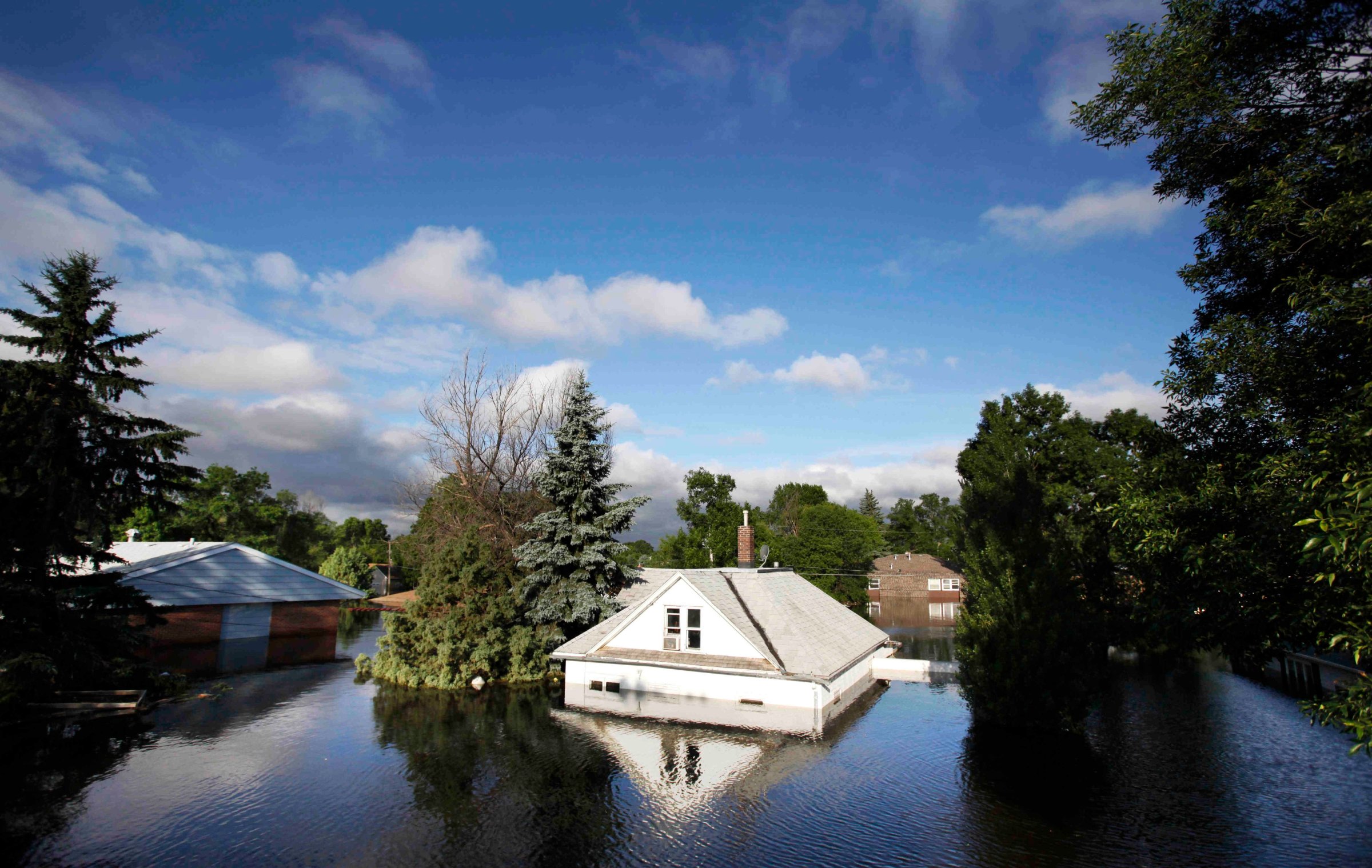
The National Climate Assessment released Tuesday did not break much new scientific ground, but it debuted a new scientific message. “Climate change, once considered an issue for a distant future, has moved firmly into the present,” the report concluded. President Obama parroted that message while flacking the report: “This is not some distant problem of the future. This is a problem that is affecting Americans right now.” The media also focused on the here-and-now. “U.S. Climate Has Already Changed, Study Finds,” declared the New York Times. “U.S. Climate Report Says Global Warming Impact Already Severe,” said the Washington Post.
It’s true, of course. We’re already seeing hotter weather, nastier droughts, rising seas, and more damaging floods. I live at Ground Zero for climate change, so I’m keenly aware that it’s not just a someday phenomenon. But I’m also a bit skeptical that the new here-and-now message will get Americans to care about an issue that’s never really grabbed them in the past. Because while climate change really is our most daunting problem, it’s not our most imminent problem. It isn’t severely hurting most Americans who aren’t drought-ravaged farmers. It’s annoying that Biscayne Bay now floods the Whole Foods parking lot near my house once a month, but it’s not the end of the world.
Climate change, on the other hand, really could create the end of the world, or at least the end of the world as we know it. The scientific warnings about climate refugees, underwater cities, extreme storms, and agricultural depressions are unbelievably scary. The National Climate Assessment documented some of those potentially horrific scenarios for the U.S., like the baking of the Southwest, the melting of Alaska, and the drowning of Florida, but it emphasized the bad stuff that’s already happening.
This is partly because environmental activists are known for being Debbie Downers and Chicken Littles, for always accentuating the apocalyptic. Ted Nordhaus and Michael Shellenberger, two longtime critics of the green movement, made a splash last month with a Times op-ed arguing that “images of melting glaciers, raging wildfires and rampaging floods” only increase skepticism about global warming. “More than a decade’s worth of research suggests that fear-based appeals about climate change inspire denial, fatalism and polarization,” they wrote.
Nordhaus and Shellenberger love nuclear power and natural gas, and the conclusion of their op-ed—that the public will start caring about global warming when enviros start embracing nuclear power and natural gas—smacked a bit of motivated reasoning. But their contention that Americans don’t like being hectored about looming disasters sounded plausible enough. (Joe Romm at Climate Progress disputed it; Nordhaus and Shellenberger responded here. I don’t know enough to adjudicate that particular fight.
Honestly, I don’t know what will get the public to start caring about global warming. The BP oil spill didn’t. The warmest decade in recorded history didn’t. Neither did Superstorm Sandy, despite Bloomberg Businessweek’s memorable “It’s Global Warming, Stupid” cover.
The epic drought in California doesn’t seem to be doing the trick, either. Part of the problem is a soft economy that makes environmental concerns seem like unaffordable luxuries. Part of the problem is the Republican Party’s rejection of climate science in the Obama era. And part of the problem is the invisibility of carbon pollution. It doesn’t make the air hard to breathe. It’s a huge threat to wildlife, but it doesn’t instantaneously wipe out species of charismatic megafauna. The recent coal ash spill in the Dan River in North Carolina and oil tanker explosion on the James River in Virgina were brought to you by fossil fuels, but it’s hard to connect those kind of accidents to the larger climate issue.
I’ve always thought that the “green jobs” argument for abandoning fossil fuels was pretty compelling; the wind and solar industries now employ more Americans than the coal industry. Maybe the spurious Republican assaults on Solyndra ruined that line of reasoning. Again, I don’t know. I’m not a marketing expert.
What I do know is that global warming is going to get a lot worse than it is now, and that it doesn’t feel that bad right now. I could see how the immediate effects of climate change would be a top-tier political issue in Kiribati, but for the U.S., the overwhelming majority of the pain lies decades in the future. I get that the new strategy is to use the impact that people are already feeling to get them to understand that the impact is only going to grow, but most people aren’t feeling any dramatic impact yet—even those of us at Ground Zero.
Maybe freaking people out about the future is as off-putting as the critics say. Unfortunately, the future on a warmer planet would be as frightening as the scientists say. The truth is unpleasant, but it’s the truth. If climate activists want to put a happy face on it, they can also point out that a warmer planet is not inevitable, that wind and solar and energy efficiency are getting cheaper while dirty energy is getting more expensive, that clean energy can be a vibrant source of economic growth. That’s the truth, too.
But if climate action depends on getting people outraged about what’s happening outside their window, we’re all doomed. We need action because of the pain that’s coming for our kids and grandkids, not because of the pain that’s already here. If we only act once the pain becomes unbearable, we’ll be way too late.
More Must-Reads from TIME
- Donald Trump Is TIME's 2024 Person of the Year
- Why We Chose Trump as Person of the Year
- Is Intermittent Fasting Good or Bad for You?
- The 100 Must-Read Books of 2024
- The 20 Best Christmas TV Episodes
- Column: If Optimism Feels Ridiculous Now, Try Hope
- The Future of Climate Action Is Trade Policy
- Merle Bombardieri Is Helping People Make the Baby Decision
Contact us at letters@time.com